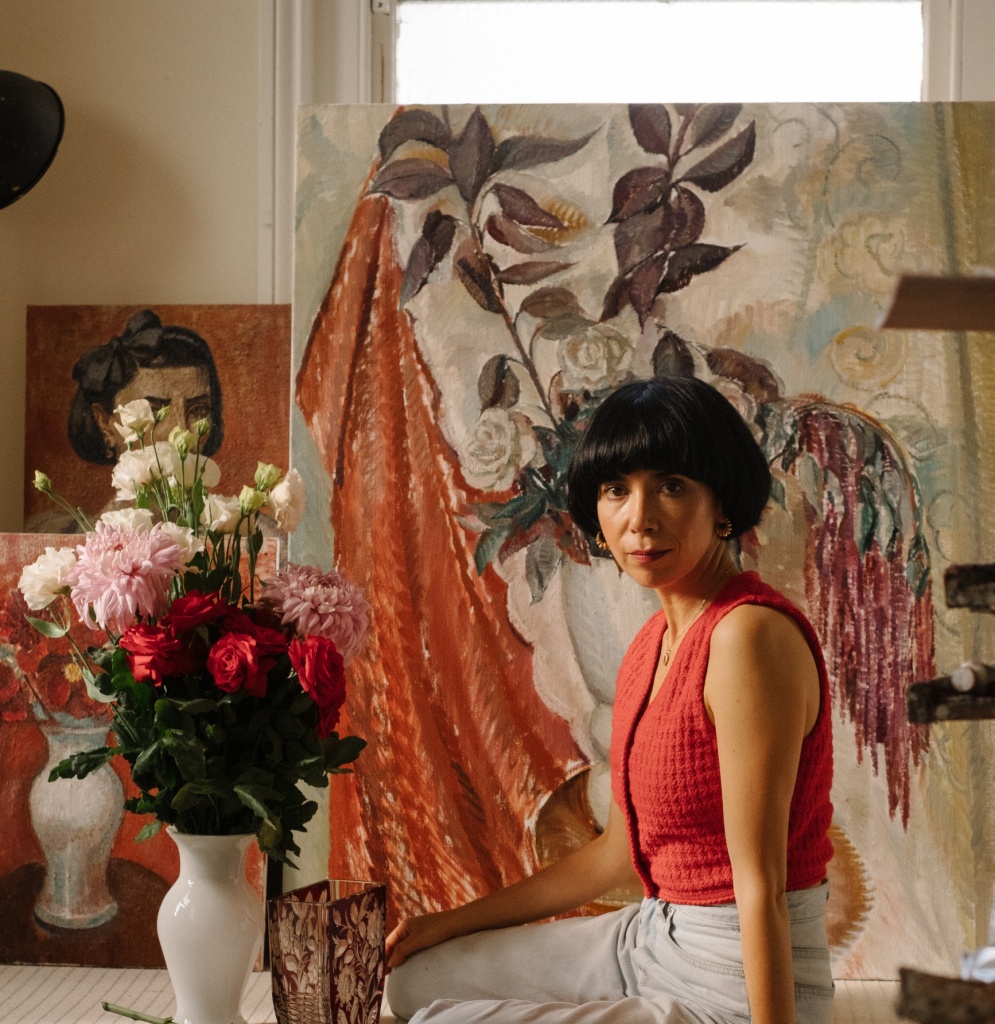Image: Jessica Grilli, Yvette Coppersmith for Carnelian, 2023
Carnelian presents various aspects of my practice linked through a thematic use of colour.
The walls have been painted with a shade named ‘Carnelian’, like that of the walls of the Hermitage in St. Petersburg in the country of Marc Chagall’s birth, in what was then the Russian Empire. Russia was a home to pre-war Jewish life that was the nucleus for Chagall’s creative spirit.
Many of the works in the exhibition take inspiration from Bella Chagall, a writer, also wife and muse of Chagall, whose life was shaped by the struggle of women in the twentieth century to have an independent creative and professional existence. To Chagall, she was the embodiment of Jewish Russia, and throughout their exile remained a living connection for his creative life. Bella’s memoir Burning Lights creates an insight into this lost world.
The resemblance of my self-portraits to Bella Chagall has meant my work speaks to the specific relationship of artist and muse in ways beyond what I planned. The romantic spirit conveyed through costumes and flowers is important in my practice as both artist and muse.
Viewing my practice in the context of the Jewish Museum of Australia, alongside a major twentieth century Jewish artist, is an opportunity to reflect on my own cultural influences. How does my work resonate with the past, while being formed by my own lived experiences as a Melbourne-born artist growing up in a Yiddish speaking pocket of the Jewish community?
Among many things the ancient gemstone Carnelian is known for, it is an artist’s stone; its warmth of colour facilitating creativity, passion and true expression.
—Yvette Coppersmith
Yvette Coppersmith’s Carnelian is the Jewish Museum of Australia: Gandel Centre of Judaica’s inaugural Contemporary Australian Artist Commission. This exhibition has been made possible with the generous support of Daniel Besen.
Yvette Coppersmith is a painter specialising in both portraiture and abstraction. While her painting practice originally formed through portraiture in the realist tradition, over the last 20 years her visual language has developed and evolved to include still life and abstraction, with an interest in the interplay between these genres and the figure.
In 2018, Coppersmith was awarded the Archibald Prize for her painting Self Portrait, after George Lambert. This was the fifth year being included as a finalist, and she was the 10th woman to win the Prize.
